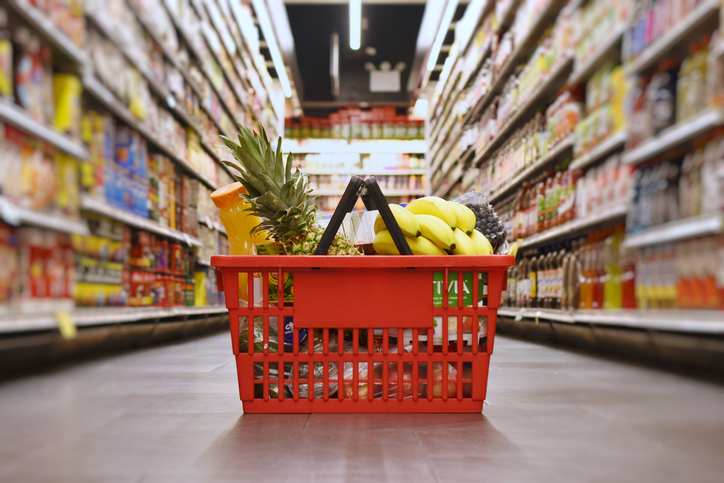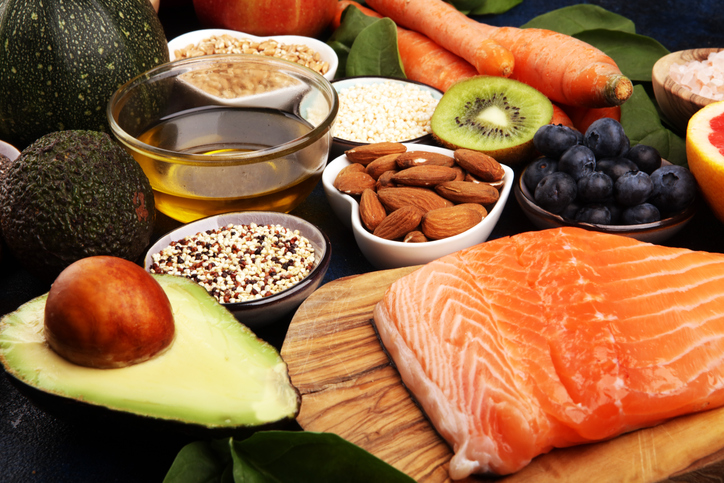Does having a healthy diet mean spending more money? Perhaps you’ve observed it as you shop – the nutrient-packed goodies can be painful for the wallet and can make you think that healthy living is beyond your family’s budget. But does healthy food really cost more?
Harvard: Healthy diets do cost more

A 2013 study by the Harvard School of Public Health researchers showed that the healthiest diets cost about $1.50 more per day per person than the least healthy diets. A dollar and fifty cents is the difference between a healthy diet high in fruits, vegetables, fish, and nuts, and an unhealthy diet with loads of processed meat, processed foods, and refined grains.
It doesn’t seem that much, but the extra cost can add up. Going on a healthy diet would cost about $2,200 more a year for a family of four.
The study analyzed 27 existing studies from ten high-income countries and evaluated the difference in the cost per serving per 200 calories of food and prices for 2,000 calories per day. Researchers have found that a healthier diet pattern hits you harder in the pocket.
However, most health professionals argue that this price difference is small when compared to the economic impacts of chronic diseases caused by poor diet, including diabetes, heart disease, and some types of cancer. The medication costs alone would certainly surpass $1.50 a day. So, when you think about it, it’s like an investment for your long-term health.
The problem is that hyper-processed salty and sugary foods are too cheap, and they seem to be commonly found on sale.
Why Does Healthy Food Cost More?
Why are healthy and organic foods more likely to break the bank? The answer can be found when we take a look down the food supply chain to understand the money going into our food.
1. Production costs
The food supply industry prioritizes packaged and processed foods since they’re more efficient to produce. Only 1% of the US’s cropland is allotted for organic agriculture, or foods containing no pesticides or GMOs. And farmers who want to venture into organic farming must make a huge investment of time and money before their crops can be rated as certified organic. For instance, crops are only considered organic when it’s grown on land that has been pesticide-free for three years. That’s a lot of time to wait if a farmer wants to shift to organic farming.
2. Logistics costs
Transporting fresh produce is more expensive than transporting packaged, processed foods because fresh foods need refrigeration to remain fresh and avoid spoilage. To get to the market on time, the delivery truck also requires a shorter lead time. This puts more strain on shippers and logistic providers to make more frequent shipments of smaller quantities, thus adding to the product’s final cost.
3. Lower demand
While demand for fresh and organic foods has been increasing for over a decade, it’s still not as high as the demand for packaged and processed food. The organic food market comprises only 5% of the total food sales. Since fresh foods have a shorter shelf life, companies have to be careful about overshooting demand when they order them. Orders for both organic and fresh foods tend to be lower than processed foods, so companies cannot make bulk shipments to lower logistics costs.
Tips for Reducing Your Costs while Shopping for Healthy Foods

If you are in the market for some healthy food options, you need to shop smart. Spending a lot of money might help but if you apply the following tips, you will spend less and end up with more. Wanting to live healthy should not be expensive. Read ahead to find out how you can save some cash on your grocery trips.
1. Know what you want to get
Don’t get overwhelmed with the labels. When you shop, you can see labels like GMO-free, organic, gluten-free, paleo, keto, vegan, halal, Fair Trade, sustainable, etc. Sometimes, these labels do increase costs, so unless you have a diagnosed medical condition or are following a strict diet, you don’t have to worry about these extra labels. The key to eating healthier is to eat more whole foods and fewer processed ones.
2. Don’t expect that healthy foods only come from health food stores.
Health food stores offer beautiful displays of healthy options, which often have higher prices. In reality, you can get any healthy and fresh food at any grocery store.
3. Prioritize.
Pick and choose what kinds of food you prefer to spend your organic dollars on. Most of the time, you don’t have enough budget to buy all things organic, so compare prices for organic and conventional produce, especially those that tend to have higher pesticide residues.
For instance, you may choose to buy organic fruits and veggies you eat whole, like lettuce, berries, and tomatoes. Then, go for conventional options on items with a thick rind that you’ll only discard, like melons, pineapple, and squash.
Also, if you have concerns about hormones and antibiotics, you may prioritize buying organic meat and eggs. Then, go for conventional pasta, grains, and bread at a discount grocery store.
4. Buy directly from the farmers.
The best option for buying cheap and fresh, healthy food is to buy directly from farmers. This cuts out the costs for middlemen and transportation.
5. Make a plan before you shop.
Have you ever felt the need to be healthier and ended up buying a cartful of fruits and veggies that have gone mostly rotten in your fridge’s crisper? To avoid this waste of food and money, plan your meals before you shop, so you will know exactly what you will need for the week. Better yet, plan and choose recipes based on seasonal produce or healthy foods that are on sale.
6. Add some cheaper proteins.
Meat is probably one of the most expensive foods on your shopping list. When you buy meat, calculate how much you really need based on 4-5 ounces per serving to avoid having too many leftovers. Instead of eating meat all week, go meatless for one day and have legumes, veggies, or grains instead. For example, a bag of lentils only costs a few dollars, but it offers you five to six meals worth of protein.
7. Buy in season.
Don’t try to get the same fruits and veggies all year round. Buy seasonal produce, as the costs will be lower. Out-of-season fruits and vegetables are more expensive, as compared to when you buy them when they are in season.
8. Buy whole.
Avoid buying pre-cut fruits and veggies as they can be pricier. Buy them whole and prepare them at home.
9. Buy in bulk.
Instead of buying healthy foods that come in single containers like whole-wheat pretzels, nuts, apple sauce, yogurt, raisins, and seeds – buy them in bulk or larger-sized packages as these will cost you less for the same amount of food. You can simply divide them into single-serve containers at home.
FAQ- Does Healthy Eating Cost More
View this post on Instagram
1. When compared, how much more expensive are healthier food options?
It is a common phenomenon to see healthier foods be labeled more expensive. It was found that on average, perishable foods that were healthier cost nearly twice as much as unhealthy foods.
For example, a serving of unhealthy food costs around 31 cents. The healthier counterpart costs around 60 cents per serving. From these numbers, we can gauge that healthy eating is costly. If you want to switch to a healthy diet, you will have to spend more on food.
There are many reasons for the price hike. It includes paying farmers and transporters. Such people are absent when you opt for unhealthy options since the latter is mostly made in factories. Bulk production is always cheaper than manual labor that is required for perishable healthier food options like fruits.
2. Why is unhealthy food cheaper?
Unhealthy food is considerably cheaper than healthy food. Due to the price disparity, most people don’t have a choice when it comes to what kind of diet they would like to have.
Unhealthy food is cheaper because the production of high volume is often inexpensive. Additionally, food policies focus on producing large quantities of food to match the ever-growing population. The only solution they have is mass production, and that option is also a cheaper one.
Mass production also leads to a slew of jobs. Because of this, the government essentially values the production and sale of these unhealthy foods. With more unhealthy food available, it is what most people will end up buying.
3. What healthy foods are cheaper?
If you are wanting to switch to a healthier diet but don’t have a huge budget, no fear. Many food options are both healthy and inexpensive. Although this list might be exhaustive, there are many tactics you can apply when you go shopping to ensure that your cart has healthy food in it.
Some cheap healthy food options are:
- Frozen Vegetables
- Oats
- Non-Fat Greek Yogurt
- Whole wheat pasta
- Multi-grain pasta
- Brown Rice
- Whole-wheat bread
- Bagged vegetable
- Russet Potatoes
- Canned tuna
- Canned beans
- Dried lentils
4. Why do healthy foods taste bland?
Healthy food choices such as salads and low-calorie wraps are deemed rabbit food. The most common complaint from people who have recently switched to a healthier diet is that the food tastes bland.
The main reason behind this is that we have lost touch with what our body naturally wants. Our natural food instincts have been taken over by highly processed food.
These processed foods are made using chemicals. These chemicals have altered what we think food should taste like. Additionally, highly processed food also contains a high amount of sugar. When we consume processed food for an extended period, our body associates food with strong tastes. For example, if we want dessert, it has to be full of sugar otherwise it is not sweet enough.
Our taste buds are only familiar with foods whose flavors are heightened and exaggerated so, when we eat natural foods like fruits and vegetables, they feel bland to us.
5. Why do people not enjoy eating healthy?
Most people want to lead a healthy life. The best way to do that is to have a healthy diet. However, most people who want to change eventually quit because they hate eating healthy.
This has less to do with a healthy diet and more with the methods they employ. Most people who attempt to change their diet do it at an extreme. They completely quit added sugar and only eat salads for weeks on end.
Such extreme changes impact our body which is not used to such high amounts of healthy foods. Forcing yourself into being healthy never works out. Hence, people should take it slow and steady. Instead of changing their lifestyle overnight, they can try swapping out a few unhealthy foods with healthier options and so on.
Conclusion
Healthy food is expensive but if we are smart about it, we can spend less and eat healthier. Follow the tips in the article to make your transition into a healthy lifestyle not as costly.

